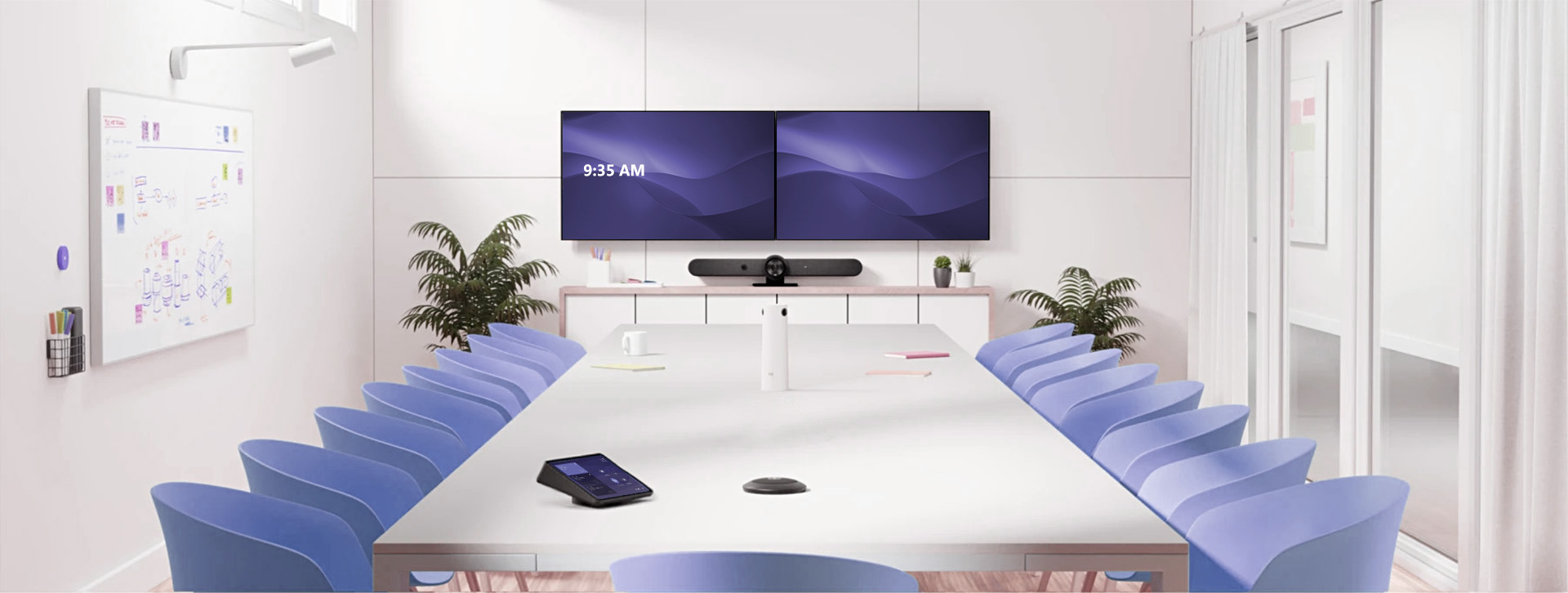Intelligent AV systems, incorporating AI, automation, and interconnectivity, now promise to revolutionize audio-visual experiences. They can automate tasks, personalize interactions, and enhance security. Valued at $4.01 billion in 2023 and projected to reach $9.94 billion by 2031, these systems offer benefits such as automated configurations, personalized experiences, and predictive maintenance. Despite challenges like integration complexities and ethical concerns – they are reshaping communication and collaboration across industries. Join us as we delve into the applications, benefits, and challenges of intelligent AV systems, uncovering their transformative impact on multimedia experiences and collaboration.
Applications
1. Automating the Mundane
Imagine entering a conference chamber and witnessing the lights seamlessly adjust, the display ignite, and the microphone connect – all without any effort on your part. Through advanced AI technology, mundane tasks such as configuring the room, devices, and systems are automated, resulting in valuable time saved and exasperation eradicated.
2. Personalized User Experience
AV systems are enhanced by AI to cater to individual user interactions. Through voice and motion control, a seamless and intuitive means of communication is established with the technology. Users can adjust volume through hand gestures, manipulate screen settings using spoken directives, or utilize AI-enabled cameras that effortlessly frame participants during virtual meetings. Additionally, AI can suggest material according to user inclinations or the purpose of the gathering, facilitating streamlined presentations and concentrated discussions.
3. Predicting Problems Before They Happen
An advanced AI system possesses the power to accurately anticipate equipment malfunctions before they have a chance to disrupt an important presentation. Through the utilization of AI-assisted predictive maintenance, this powerful technology thoroughly examines data from AV systems to swiftly diagnose potential problems and proactively schedule necessary maintenance tasks.
4. Security with a Smart Edge
AI can elevate security in an AV system by implementing features such as facial recognition and user authentication, guaranteeing that access is restricted solely to authorized individuals when handling sensitive data or managing crucial systems. This adds an extra layer of security for presentations containing confidential data.
5. Data-Driven Insights
AI can collect valuable data on room utilization, user conduct, and system proficiency. Utilizing this information, AV systems can be enhanced for superior work processes and resource distribution. Scrutinizing data can help ascertain under-utilized rooms or modify microphone placement for improved audio quality in specific conference halls.
Benefits
1. Energy and Cost Savings
Intelligent AV systems enhance energy efficiency through AI-controlled monitoring of room occupancy, automatic adjustments of lighting & temperature settings, and optimized device usage alongside automated power management features. This prevents needless energy consumption in unoccupied spaces and reduces overall energy bills over time.
2. Customization and Personalization
These systems facilitate customized experiences tailored to individual preferences or specific use cases, including preferred display arrangements, lighting strategies, and audio configurations. For instance, in a university lecture hall, the AV system permits professors to personalize the room configuration based on their teaching styles or course needs. A physics professor can tailor the displays and lighting for simulations, while a literature professor can optimize the setup for video presentations and discussions.
3. Remote Management
Remote management is empowered by intelligent AV systems, allowing IT staff to monitor system health, troubleshoot problems, and enact basic configuration changes. This eradicates the necessity for on-site visits regarding minor adjustments, preserving valuable time and resources. In addition, remote management enables centralized oversight of multiple AV systems in diverse locations, ensuring uniform functionality and streamlining the process of resolving technical issues.
4. Integration and Interoperability
Intelligent AV systems effortlessly merge with other building systems, such as HVAC, lighting, and security, as well as third-party applications like video conferencing platforms, digital signage, and room booking software. This compatibility facilitates a unified intelligent building atmosphere, elevating collaboration and productivity.
5. Future-Proofing
Intelligent AV systems can easily expand and adjust, facilitating seamless upgrades and incorporation of advanced technologies as they materialize. This mitigates the necessity for frequent replacements. An example of this can be seen in a business training centre that procured an AV system boasting a versatile and accessible design. Given the widespread implementation of emerging tech such as AR and VR for training purposes, the centre could effortlessly incorporate these advancements into its current AV framework without necessitating a total renovation.
Challenges
1. Complexity and Integration
The incorporation of diverse hardware and software elements from various suppliers is frequently characteristic of intelligent AV systems, presenting potential complications in compatibility and complexity. Overcoming these challenges requires harmonious interoperability among disparate systems, including AV technology, building management operations, and external applications, which can be a formidable obstacle.
2. Cost and Return on Investment (ROI)
Implementing intelligent AV systems entails a substantial initial outlay of resources, encompassing not only hardware and software but also installation and continual upkeep expenses. Justifying this preliminary investment and showcasing its discernible ROI via heightened efficiency, reduced energy consumption, and improved operational efficacy can prove to be an arduous task, especially for entities with restricted budgets or a lack of familiarity with such systems.
3. Training and User Adoption
While intelligent AV systems strive to offer a user-friendly interface, their sophisticated attributes and interfaces may require rigorous instruction for end-users and support personnel. Promoting user integration and assurance of optimal utilization of the system’s prowess can be a formidable feat, particularly within expansive corporations or academic establishments.
4. Ethical Considerations
Intelligent AV systems can integrate AI algorithms to execute tasks such as auditory identification, bodily movement regulation, or autonomous decision-making. Vital attention must be given to eliminating bias in these algorithms and maintaining human control and supervision over crucial resolutions to address ethical concerns.
5. Data Security Concerns
Protection of sensitive information and prevention of unauthorized access or system breaches are paramount considerations in guaranteeing the security of intelligent AV systems, which gather and analyze data on room usage patterns, occupancy levels, and user preferences. As such, implementing robust cybersecurity measures along with stringent data encryption and access controls is imperative.
Conclusion
Intelligent AV systems are changing the game when it comes to multimedia experiences and collaboration, even though there are some hurdles like integration, cost, training, ethics, and security. Getting on board with these solutions puts companies in a good position for efficiency, engagement, and innovation in an interconnected world. Taking proactive steps to tackle challenges head-on unlocks their power to transform businesses and helps them stay ahead in the changing landscape of multimedia technologies.
From corporations to educational institutions, Resurgent’s cutting-edge intelligent AV solutions elevate multimedia experiences and collaboration. Our end-to-end AV integration services – including consulting, design, installation, training, and support – are tailored to meet your industry’s unique needs. With a deep commitment to understanding your goals and vision, we craft customized AV strategies that drive efficiency, engagement, and innovation. Experience the future of seamless multimedia today. Contact Resurgent to get started.



